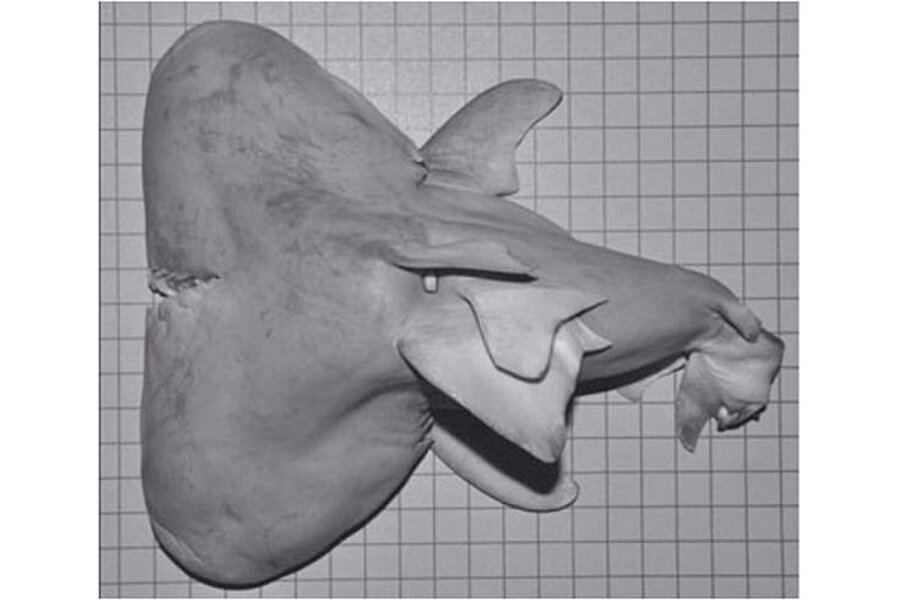2-headed shark fetus discovered by fisherman
Loading...
When a fisherman caught a bull shark recently off the Florida Keys, he came across an unlikely surprise: One of the shark's live fetuses had two heads.
The fisherman kept the odd specimen, and shared it with scientists, who described it in a study published online today (March 25) in the Journal of Fish Biology. It's one of the very few examples of a two-headed shark ever recorded — there about six instances in published reports — and the first time this has been seen in a bull shark, said Michael Wagner, a study co-author and researcher at Michigan State University.
Technically called "axial bifurcation," the deformity is a result of the embryo beginning to split into two separate organisms, or twins, but doing so incompletely, Wagner told OurAmazingPlanet. It's a very rare mutation that occurs across different animals, including humans.
"Halfway through the process of forming twins, the embryo stops dividing," he said.
The two-headed fetus likely wouldn't have lived for very long in the wild, he said. "When you're a predator that needs to move fast to catch other fast-moving fish … that'd be nearly impossible with this mutation," he said. [See the two-headed shark.]
Wagner said the description of the deformed shark may someday help better understand how these deformities arise in sharks and other animals.
Two-headed snakes and turtles can be bought from certain specialty breeders, and there is a small market for such creatures, Wagner said.
Several of the few examples of two-headed sharks available today come from museum specimens from the late 1800s, when deformed animals and other macabre curiosities fetched high prices, he said.
Another reason the two-headed shark likely wouldn't have survived: its small body. "It had very developed heads, but a very stunted body," Wagner said. There's only so much energy that can go into the body's development, and it went into the shark's double noggins, he added.
Email Douglas Main or follow him @Douglas_Main. Follow us @OAPlanet, Facebook or Google+. Original article on LiveScience's OurAmazingPlanet
- The World's Freakiest Looking Animals
- 10 Amazing Things You Didn't Know about Animals
- On the Brink: A Gallery of Wild Sharks
Copyright 2013 LiveScience, a TechMediaNetwork company. All rights reserved. This material may not be published, broadcast, rewritten or redistributed.







